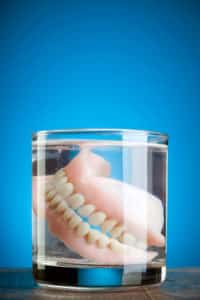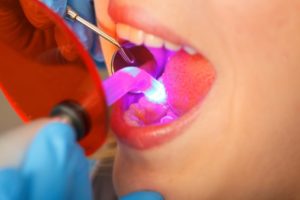
How Sticky Affect Denture Wearers
The problem with sticky foods is twofold for denture wearers. Sticky foods have a tendency to stick in the teeth of dentures. Many new denture wearers have a hard time cleaning their dentures, but sticky foods can make it just that much harder.
Since dentures need to be cleaned daily after being worn, the stuck-on food like gummy candy can be a hassle to clean off and it may take extra time. Another problem with sticky foods is that they are typically very sugary. Sugary foods that sticks to your dentures can cause gum disease if not taken care of properly, because the bacteria in your mouth loves to eat sugar.
The other problem with extremely sticky foods is with how it affects the dentures while in use. To use most dentures, you will need some denture adhesive to keep them in place. Sticky foods can make the adhesive weaker. It does this by pulling on the dentures each time you chew the sticky food. If you enjoy sticky foods in the morning, your denture adhesive may not last past lunch. Then, you will need to take the extra time to reapply the denture adhesive which can be quite frustrating.
If you would like any other denture tips, give us a call. We like to give as much information as we possibly can so that you can keep good oral health and stay safe while doing so. We can also talk about other foods that new denture wearers need to be cautious of if you’re interested.

 It’s difficult to deal with a broken or chipped tooth. It can be very painful, hinder your daily dental health routine, and negatively affect your quality of life. The same thing can also be said for a tooth that has suffered damage due to decay. Fortunately, there are restorative measures that can be used to solve your problems.
It’s difficult to deal with a broken or chipped tooth. It can be very painful, hinder your daily dental health routine, and negatively affect your quality of life. The same thing can also be said for a tooth that has suffered damage due to decay. Fortunately, there are restorative measures that can be used to solve your problems.